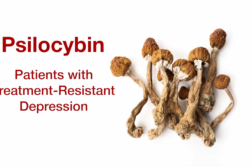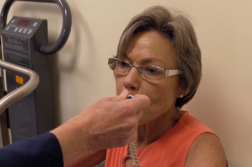ORLANDO, Fla. (Ivanhoe Newswire) — Each day, 20 people die waiting for a life-saving organ. And while 95 percent of Americans support organ donation, only 54 percent of them actually sign up to be donors. So why aren’t more people willing to give their organs away?
Right now, more than 116-thousand Americans are waiting for an organ transplant. And, another person is added every ten minutes. But more people are waiting than donating.
Sometimes, myths about organ donation hold people back. And, there are a lot of them. The first, you are too old to be a donor. There’s no age limit. To date, the oldest donor in the u-s was 93! Another fallacy is that you can’t donate if you’re sick. Only a few illnesses such as h-i-v or certain cancers would prevent you from being a donor. But you may still be able to offer organs or tissues. So it’s best to register and let the transplant team decide.
Maria Mountis, DO, from the Cleveland Clinic said, “Everyone can be an organ donor, and I think everyone can offer the gift of sight, the gift of life, to lots of individuals.”
Some people think their families will have to pay for the donations when they pass, but this is also false. There’s no cost for being a donor. Another concern, you won’t be able to have an open casket funeral. Most of the time, this is not true. And, the last myth, if you’re an organ donor, doctors won’t try to save you. Medical teams are trained to keep you alive first. Donation isn’t even a possibility until all lifesaving methods have failed.
The united network for organ sharing, or UNOS, says you must die in a hospital so that a ventilator can maintain your organs for transplantation. However, if you die at home, you can still be a tissue or a cornea donor. To learn more about how to register to be a donor, visit: https://organdonor.gov/register.html or www.unos.org.
Contributors to this news report include: Julie Marks, Producer; Roque Correa, Editor.
Free weekly e-mail on Medical Breakthroughs from Ivanhoe. To sign up: http://www.ivanhoe.com/ftk
ORGAN DONOR MYTH
REPORT #2478
BACKGROUND: In the United States, over 120,000 people are waiting for an organ transplant. Sadly, many will never get the opportunity to be matched with a suitable donor organ. In fact, approximately 21 patients per day die in the U.S. because of lack of donor organs. Organ donors can save someone’s life. Moreover, minority groups such as African-Americans, Asians and Pacific Islanders, Native Americans, and Hispanics are more likely than whites to have conditions that affect the kidneys, heart, lung, pancreas, and liver. Furthermore, certain blood types are more prevalent in ethnic minority populations, and because matching blood type is vital for successful transplants, this creates a need for minority donor organs. Organ donors have the potential to not only save one life but can save or enhance as many as 50 lives. Many families have said that knowing that their loved one gave someone the gift of life made the loss easier to cope with.
(Source: http://www.mayoclinic.org/healthy-lifestyle/consumer-health/in-depth/organ-donation/art-20047529)
MYTHS: Most people shy away from the idea of becoming an organ donor because of misleading information associated with organ donation. The most common myth is that doctors will be less motivated to save an individual’s life; however, a doctor’s first concern is saving their patient’s life—not somebody else’s. Furthermore, an individual’s organs are not removed till after the individual has officially been declared deceased. The hospital can also test the donor, at no charge to their families, to determine that they’ve truly died. Although there are frequent myths that organ donor is against an individual’s religion, organ donation is consistent with the beliefs of major religions such as Roman Catholicism, Islam, most branches of Judaism and most Protestant faiths. Also, there is no ‘prime’ age for organ donation because it is based on strict medical criteria. Someone under the age of 18 can have their parents or legal guardian authorize this decision, and older adults can still be great a match for transplantation. Lastly, the most common myth is that organ donation may prevent someone from having an open casket. However, the donor’s body is typically clothed for burial, so there are no visible signs of organ or tissue donation.
(Source: http://www.donors1.org/learn2/donorprogram/)
PROCEDURE: The cause of death determines what organs and tissues can be donated. For instance, most organ donors suffer fatal head injuries such as those from car accidents, stroke or a brain aneurysm. There are two types of donation: bone donation and skin donation. For a bone donation, a rod is placed where the bone is removed. With skin donation, a tiny layer of skin is taken from the donor’s back. When the organs are recovered from the body, they are infused with a cooled solution to preserve the organ. After the organ is recovered, tissues such as bone, cornea, and skin are recovered as well. The organ is measured and evaluated and then placed in a sterile solution and ice to be transported to where the transplant will take place. Kidneys can be preserved for up to 72 hours and 24 hours for livers. However, heart or lung transplant can be preserved outside of the body for only about four hours.
(Source: http://www.donors1.org/learn2/donorprogram/ and http://www.mayoclinic.org/healthy-lifestyle/consumer-health/in-depth/organ-donation/art-20047529)
* For More Information, Visit:
United Network for Organ Sharing



